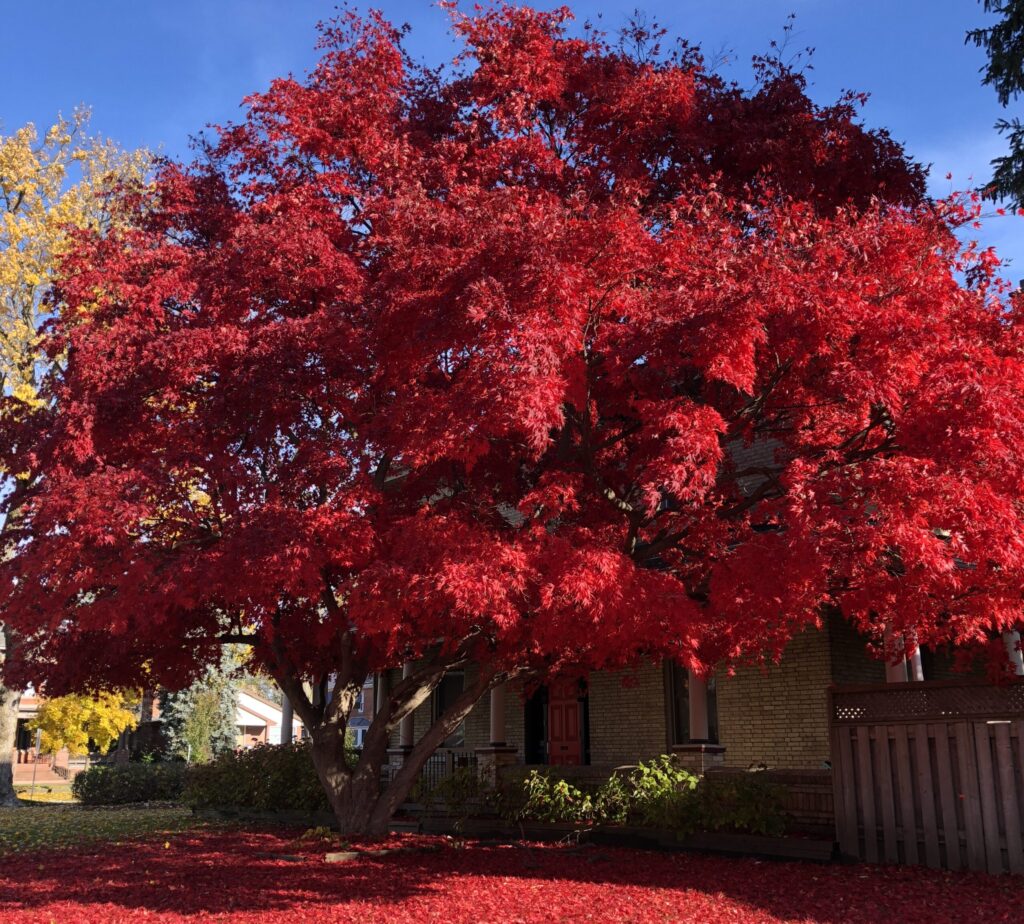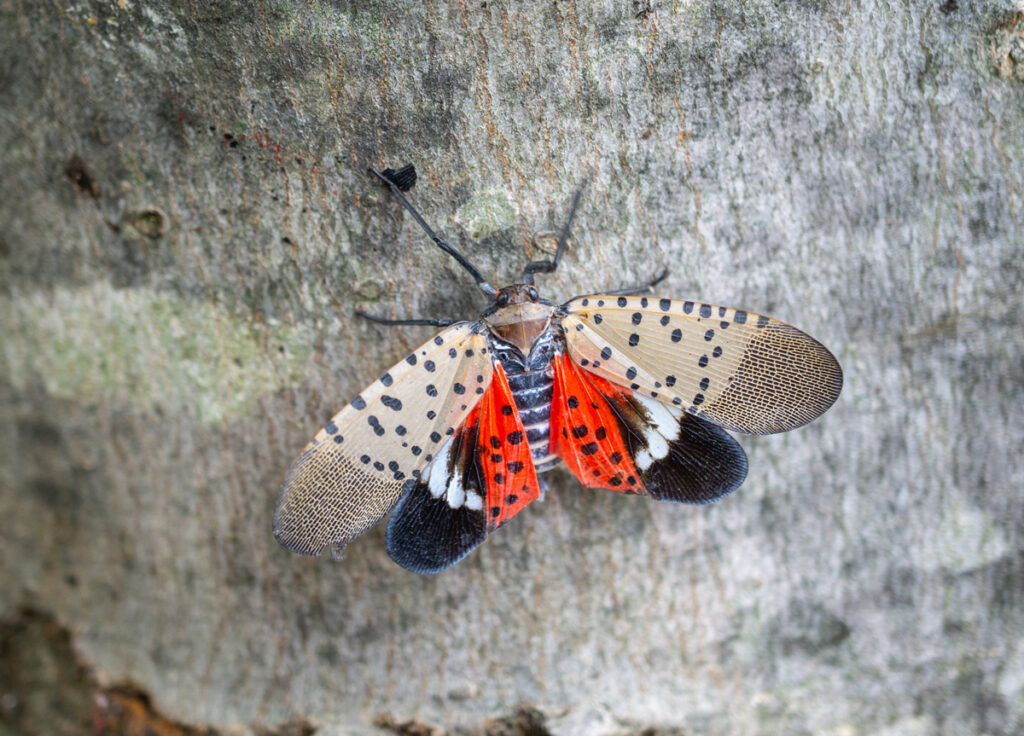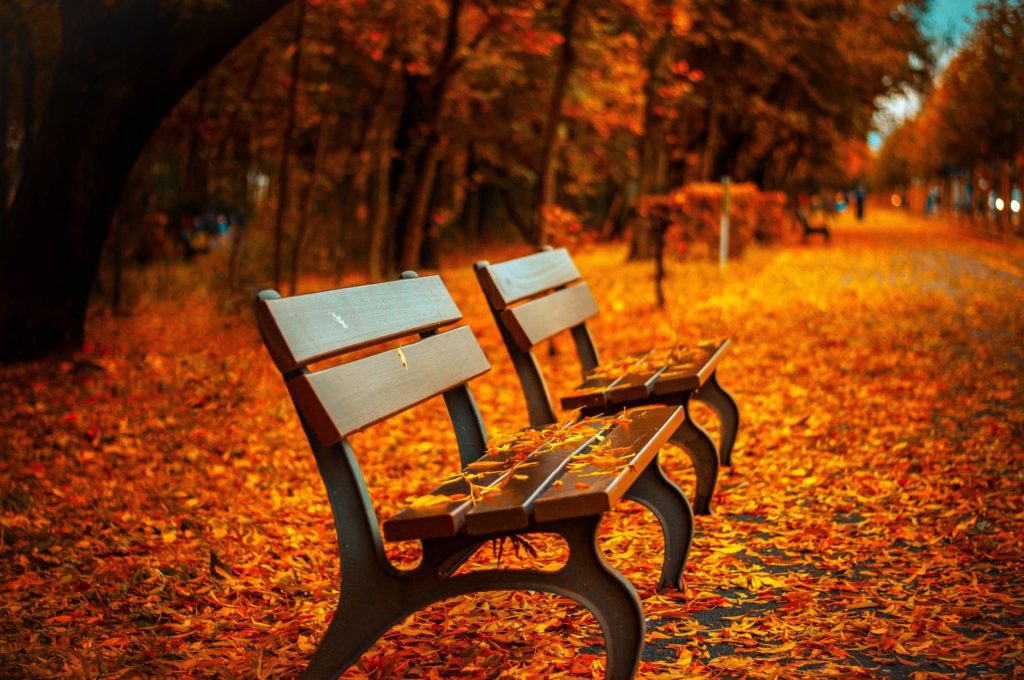
Most plants on our planet’s surface require light, water, and carbon dioxide in order to produce energy through photosynthesis. Knowing that photosynthesis occurs in the plant’s chlorophyll (green) pigment, many have asked the question
“How do red leaves (actually all plants with red, orange, or burgundy leaves) photosynthesize and create energy?”
The chlorophyll in green leaves absorbs the blue, violet, and red parts of the light spectrum reflecting the green that our eyes see. So what is it in the plant that causes us to see the red or burgundy reflected back?

The reality is – All plants DO have chlorophyll
Along with chlorophyll, plants have other pigments which can perform a small amount of photosynthesis and change what we see too. The other two most common pigments are:
- carotenoids which absorb blue to blue-green spectrums of light and reflect yellow and orange
- anthocyanins which absorb green, blue, and blue/green and reflect red.

Biological pigments in plants – Image courtesy of BYJUs online learning
So – What we’re seeing as red, yellow or orange leaves, actually are reflections of those colours and absorption of other colours. Wow!
It was originally thought that the plants with non-green leaves had less chlorophyll making it so the yellow/orange light reflected by the carotenoids and the red light reflected by the anthocyanins are more dominant. Since these plants supposedly had less chlorophyll it was also thought that they were not able to create as much energy.
It is now widely accepted that there is not less chlorophyll, rather one of the other pigments is more dominant, affecting the leaf colour we perceive. The leaves still have enough chlorophyll to make all the oxygen and carbohydrates required for the plant to grow.
It is also thought that anthocyanin and carotenoid can help protect against the sun’s harsh rays. This could be why a number of plants’ new leaves have a slight red tinge to them. Carotenoids can dissipate excess energy – Read More
How does this explain fall colour?
Fall in temperate regions is ablaze with red, orange, and yellow leaves. Plants that have had green leaves all summer suddenly change colour. What gives?
Although chlorophyll is the dominant pigment in the leaves all summer, it dies off in the fall leaving the anthocyanins and carotenoids to feed and protect the plant. Without the chlorophyll the other pigments are now dominant, resulting in different parts of the light spectrum being reflected.
So now you know that red plants photosynthesize just like all other plants!
Whether the leaves are varying shades of green, blazing reds, or bold burgundies, the chlorophyll is always present and working away, making energy for the plant.
Sometimes, however, other pigments steal the stage and put on a show.

More resources related to “How do red leaves photosynthesize”:
What’s chlorophyll and how does it work – great article by Arizona State University – Ask a Biologist
Photosynthesis for Kids Video:
http://8ff.ad6.myftpupload.com/basic-lifecycle-of-plants-learn-and-grow/





About The Author: Heather O'Shea
Bees, butterflies, spiders, and worms all make Heather happy! A long-time gardener and nature lover, Heather is often found outside observing the world around her. These two passions are combined in the ecologically sustainable gardens she designs to attract as many native critters as possible — even skunks are welcome to travel through her yard (as long as they don’t take up residence).
More posts by Heather O'Shea